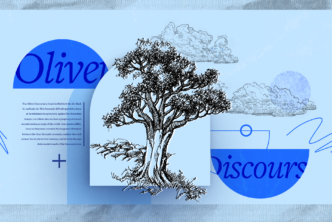As the writer of Ecclesiastes mourns, and as John the Evangelist hints, there is no end to the number of works one might consult for acquiring knowledge. When commencing research for a paper or sermon, a critically important skill is that of discerning the most important sources outside of the biblical text itself.
The sheer volume of material waiting on the other side of the blinking cursor of an Internet search engine or positioned on the shelves of unending rows in a theological library is enough to send a student or a preacher staggering into cognitive paralysis.
I know this. I teach New Testament at a theological college and I am an ordained Baptist minister who preaches throughout the year.
Each year I receive multiple requests by students who have walked into the library, standing on the cusp of seemingly unlimited information, but then walked right back out overwhelmed and disoriented. Then the emails come: “exactly which bibliographical sources should I use for this essay assignment?”
I decided recently to stop sending lists of definitive sources for their bibliographies. Though I should certainly be available to offer suggestions, I want my students to begin wading into the mass of secondary literature on their own.
Providing a list of books and articles specific to each assignment might expedite my students’ research, but it also limits their opportunities to develop the necessary skill of discerning the most important secondary sources for themselves. So, I teach them to fish.
Rather than bibliographical lists, I offer my students the general principles that I use myself in selecting resources for research and writing. This guide is intended to save me some time (for my own research and writing, perchance?).
My ultimate motivation is more noble. I hope that these principles will be of service to my students, not only for their essay assignments but also in their future ministerial labors of preaching and teaching. I have the same hope for the readers of theLAB, especially those of you who are either still students, or are currently teaching students to do their own world-class research.
Know the sources
What follows is the list that I currently supply to my students. In discerning excellent sources, look for the following (in no particular order):
Publication date
The more recent is not necessarily the more important when it comes to sources. Many of the best commentaries on specific books of the Bible were penned a long time ago (think Origen, Calvin et al), and even commentaries a decade old can often be superior to the latest and greatest offerings from various publishers (e.g., it would be hard to imagine better works than J. L. Martyn’s commentary on Galatians or Joel Marcus’ 2-volume commentary on the Gospel of Mark 1-8 and Mark 8-16).
But it is very important to ensure that you are not working with outdated material, however helpful it may have been when it was published. Consult enough recent commentaries/books/articles to know the contemporary issues at hand in biblical studies on your passage and/or topic.
Publisher
Most books are brought into publication through a vetting process. Those that endure the most strenuous gauntlet in the pre-publication phase of “peer review” are generally the best to consult, especially when you have very little space in an essay or sermon for dallying with sub-par works.
The most prestigious publishers in biblical studies include Cambridge University Press (CUP), Oxford University Press (OUP), Yale University Press, and Brill. Baker, Eerdmans, Baylor University Press, SPCK, T & T Clark, and Westminster John Knox also publish excellent material, which is often quite accessible for less specialized readers.
Certain commentary series are better than others. This will be evident in terms of the level of engagement with the original Greek; the layout and organization of the material; and the quality of scholarship. Many series offer a specific angle or perspective, such as a social-scientific approach or an emphasis on theological interpretation. For the NT, in general, the most trustworthy commentaries are found in the NICNT, NIGTC, BECNT, BNTC and NTL series (NB: I am not supplying anything but the official abbreviations—you can search these online or find the SBL Handbook of Style which will list them for you).
For Greco-Roman rhetoric and background, I am a fan of Baker’s Paideia series. Perhaps the most respected commentary series grounded in an explicitly historical critical approach is the Anchor Yale Bible.
Author
Though I have listed recommended commentary series, I tend to trust individual scholars over publishers and series. When you are rummaging around the library long enough and engaging with the material long enough, certain scholars stand out as more reliable on certain fields, topics, or biblical books.
On the other hand, some authors stand out because they are controversial. And although some controversial arguments can and perhaps should be dismissed, engaging with them can open up fruitful new avenues of seeing and understanding topics or texts.
Diversity
On the note of controversial authors, it is important not to allow yourself to get stuck in a ghetto of one particular strand of thinking. For instance, if you are prone to work with more evangelical commentators, make sure you consult scholars from outside that fold, and vice versa. Moreover, there are Catholic sources that Protestants can learn quite a bit from.
It is also recommended that you keep an eye out for excellent sources written by minority voices, which, in biblical studies, includes women. If you read all male commentators on the Pastoral Epistles, for instance, I daresay you are not getting the full interpretative picture, even if many male interpreters are striving to be more adept at listening to the full range of voices.
Articles and monographs
Commentaries are convenient sources. They provide clear access to specific texts in a clear format (usually). But the most important work being done in biblical studies is usually found in monographs (major book-length treatments on a focused, clearly defined topic) and in peer-reviewed journal articles.
Good commentaries compile these two sources to a degree and refer to them (often liberally) in the footnotes. But, to take an example, a commentary written in 2005 is considered to be fairly recent. But in the ensuing 12 years, major studies will have been published on your essay or sermon topics/texts that will simply not feature in anything but the most recent commentaries (which usually enter a publication phase 1–3 years before they are in print, meaning that they may already be outdated by a few years the moment they hit the bookshops or Amazon warehouses).
Monographs are intimidating, specialist studies, but they usually have detailed tables of contents in which you can quickly findthe key issues you are looking for. They also usually contain comprehensive indexes of modern authors, subject, and both biblical and extra-biblical primary texts.
A vast trove of articles can be found through a search on ATLA or JSTOR (search databases normally available through a library’s webpage); both sites employ powerful search engines to narrow your results. Many of these articles can be instantly viewed in PDF form.
Engaging with this material will likely increase your grade or assessment mark (assuming you engage with it well). More importantly, it will deepen your understanding of the passage you are studying and the history of research behind it.
The most important journals for NT work include NTS, JSNT, NovT, CBQ, Early Christianity, and JBL. The best mongraphs in NT studies include SNTSMS, LNTS (formerly JSNTSup), BZNW, NovTSup, and the SBL Series.
Classics studies (in the secondary literature)
Some secondary works in modern biblical studies are deemed “classics” because they must be engaged with for various reasons. Perhaps they broke new ground, offered a new paradigm, changed the focus of a segment of NT studies, etc. They may be only a few decades old, such as E.P. Sanders’ Paul and Palestinian Judaism.
If you consult these, you must also have some sense of their reception. For instance, Wayne Meeks’ The First Urban Christians has been reprinted, which would include an updated preface. There is also a collection of essays edited by Todd Still and David Horrell devoted to the influence of Meeks’ work over the years.
Classics are great to know, as long as you also become familiar with their impact and reception in contemporary scholarship.
Patristic, Medieval, and Reformation-era Commentaries
You may not be expected to engage closely with theologians from earlier periods of church history (though, in my view, we should be paying more attention to these works in NT teaching and research).
It is important, however, to know that a number of publishers are making available the rich interpretative wisdom of our forebears to contemporary English readers. These series include IVP’s Ancient Christian Commentary and Eerdmans’ The Church’s Bible.
Dictionary entries
There are some excellent and fairly recent dictionaries available with topics listed alphabetically. The entries offer a concise overview and usually provide a bibliography for further research.
These dictionaries include the IVP Dictionary of Paul and his Letters, the Anchor Yale Bible Dictionary and The Eerdmans Dictionary of Early Judaism.
Selective websites
Some websites provide a helpful guide into secondary literature. NT Gateway was one of the most reliable, and probably still is, but the site is a bit dated and awaits updating. Still, the resources there were assembled by one of the top NT scholars in the world, so it’s worth starting out here.
Bestcommentaries.com is also worth checking out, though note that it is run by more conservative thinkers, so there is a bit of bias at play in the ranking (which is fine, since everyone has a right to their own informed opinions, as long as you understand that such a bias is indeed at play).
You may also find some help from the SBL website, Bibleodyssey.org.
Be warned, though: there is an incalculable amount of junk out there online. And I am recommending these websites not as sources to be cited in an essay but as sources that guide you to denser sources elsewhere.
Bible apps
The Logos Bible app is among the most important digital tools used in biblical scholarship. This system offers compilations of varying amounts of secondary sources accessible through powerful search capabilities, fully tagged and integrated with the biblical text.
I mainly use software for engaging closely with the biblical text in Greek and Hebrew. But it can be expensive. Logos, however, does have a free edition. Still, you’ll want to buy a base package for any serious degree of research.
Another free source for accessing the Greek and Hebrew of biblical texts is STEP Bible, an online tool created by Tyndale House in Cambridge. When it comes to using these systems to engage with secondary literature, make sure you cite it appropriately.
Do the work
So… with these provisional suggestions, you are now booted out of the nest as fledgling researchers and flapping awkwardly on your own through the wondrous world of New Testament scholarship.
As Augustine heard that fateful day, “take up and read.” But like Augustine, take up and read the best material out there. And nothing is better than the primary source of Scripture itself.





